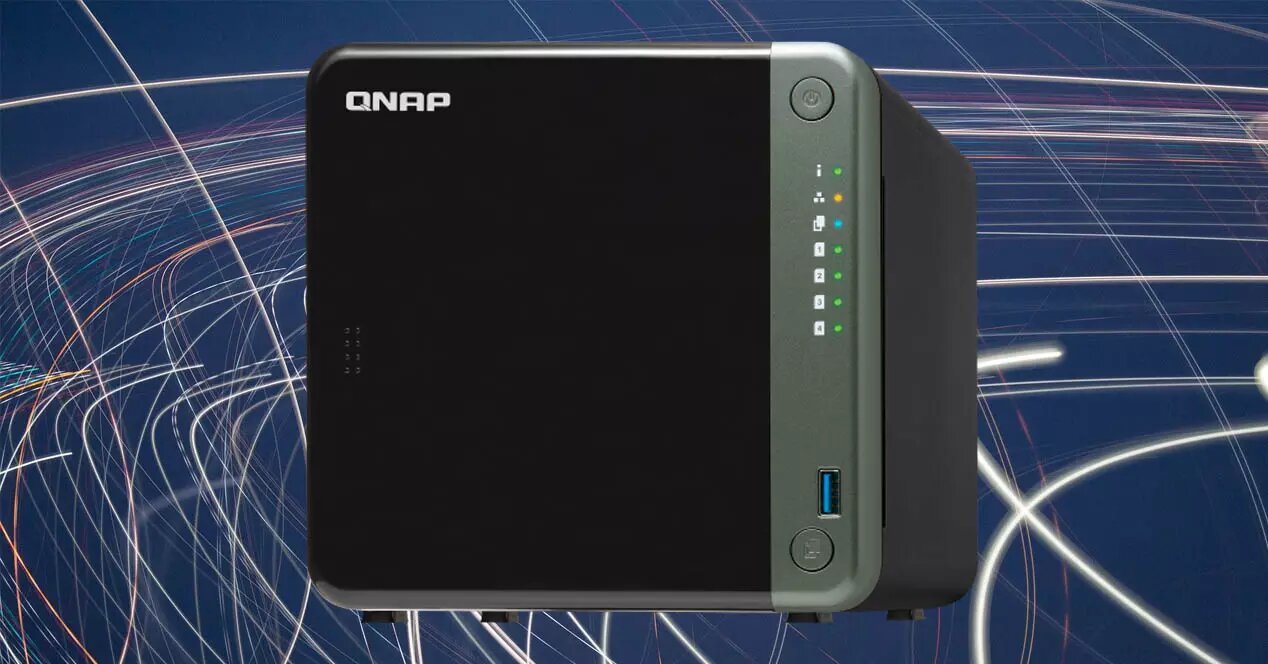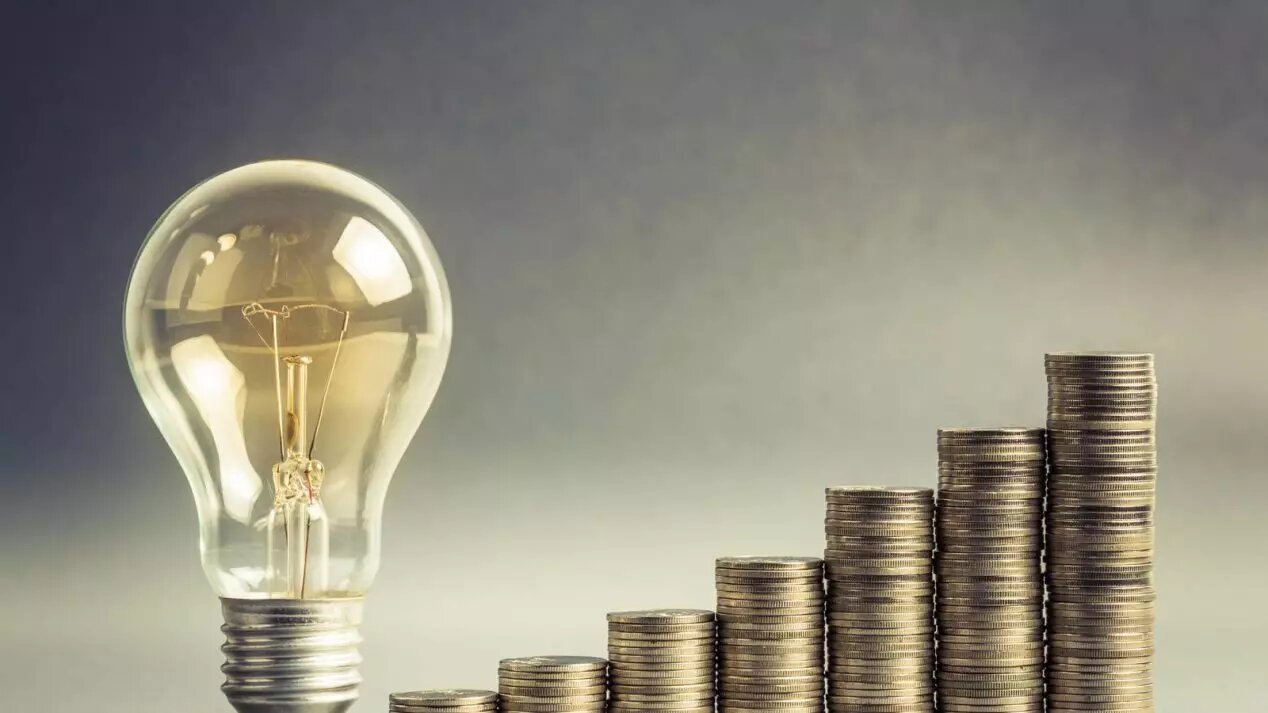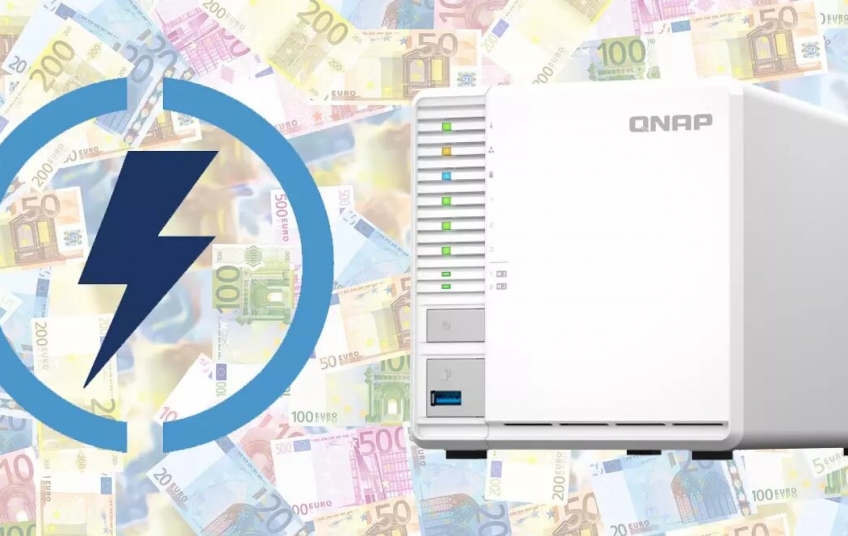NAS servers are one of the most used devices in home and office environments to store files and folders locally. The most normal thing is to have a computer that is permanently on to access your files and folders remotely at any time, however, we also have the possibility of turning it off at night and even programming the computer to turn off and on at a certain time . Today in RedesZone we are going to explain to you how much a NAS server usually consumes , and what you can do to lower the consumption of electrical energy.
What influences the consumption of a NAS?
The consumption of a NAS is not always the same, in fact, even having exactly the same model, consumption is not the same, because it depends on many factors that we must take into account. Next, you can see everything that influences the consumption of a NAS:
-
Processor: it is the main consumption factor, the more powerful the processor is, the more consumption it usually has, although it depends on the processor model, so it is not possible to draw hasty conclusions. Generally new processors are much more powerful than previous generations, and have a clearly lower consumption.
-
Installed Hard Drives: The second consumption factor is the hard drives installed in the computer. If we have 4 hard drives installed instead of 2 hard drives, we will generally consume around double. Each hard disk consumes between 6Wh and 9Wh at full capacity, so you must take this into account when installing more disks in your server. In the case of SSD units, consumption is much lower, reaching a consumption of 1Wh. We must also take into account that in inactive state the hard disk consumes less than at full capacity, in addition, if we configure the NAS operating system to hibernate, consumption will be almost zero.
-
Server usage: The third consumption factor is the use we give to the server. If most of the time it is not used, then the consumption will be very low because the hard drives will be in hibernation and the processor will also be idle. If we use it intensively, it will consume more.

Now that we know everything that influences a server, let's see some examples of consumption.
Examples of consumption in various models
The first thing we must take into account are the units of power and electrical consumption. The power is measured in W (watts) or in kW (1kW is 1000W), and it is the unit that we can find in the technical specifications of the different servers, in the case of wanting to calculate the electrical consumption we must multiply the value of W by the time on. The unit of measurement for electricity consumption is Wh (watts per hour) and also in kWh (kilowatts per hour).
If a manufacturer indicates that its equipment has a consumption of 50W, it means that it consumes 50W in one hour, so it has a consumption of 50Wh, and if we multiply this value by 24, it means that this model consumes 1200Wh or 1.2kWh daily. If we multiply this value by 30 again, we can calculate how much the equipment consumes monthly, about 36kWh. Once we have the monthly consumption, we will have to multiply the price of the kWh that we have contracted with the electricity company.
-
QNAP TS-253D : the manufacturer tells us that it consumes 8Wh in sleep mode with the two hard drives suspended, in the case of being in operation at full capacity it is 12.5Wh.
-
QNAP TS-453D : the manufacturer tells us that it consumes 11.5Wh in sleep mode with the four hard drives suspended, in the case of being in operation at full capacity it is 26Wh.
-
QNAP TS-653D : the manufacturer tells us that it consumes 18.6Wh in sleep mode with the six hard drives suspended, in the case of being in operation at full capacity it is 35.5Wh.
The only difference between all the models is the number of hard drives we have installed, as the first one has two bays, the second one has four bays and the last model has 6 hard drive bays. Once we have the consumption in Wh, it is enough to multiply by 24 to calculate the daily consumption, and if we multiply by 30 again we can calculate the monthly consumption to later calculate the monthly cost.

In the case of these examples, the TS-253D at full capacity will consume 9kWh per month, the TS-453D will consume about 18.7kWh per month and the TS-653D model will consume about 25.5kWh per month. If we convert this to electricity cost, and assuming that we have an average price of €0.15 per kWh consumed, the cost is €1.35 for the TS-253D, €2.8 for the TS-453D and 3 €.8 in the latter case. Of course, if we have the TS-653D model but we only have two or three hard drives, logically we will have a lower consumption, very similar to that of the TS-453D model, because having the hard drives permanently on and working is one of the things that most affect energy consumption. In the case of using SSD units, the consumption is usually 1Wh at most.
In our case we are using a QNAP TVS-h1288X NAS server, according to the manufacturer it has a typical energy consumption of 97.4Wh, which makes a monthly consumption of 70kWh and a cost of €10.5 in the electricity bill. However, if we do not have it full of hard drives, the consumption is clearly lower than these values. The best way to measure how much a server consumes is to place a smart plug that has a consumption meter, in this way, you will be able to get a daily average of consumption based on your use of the server.





